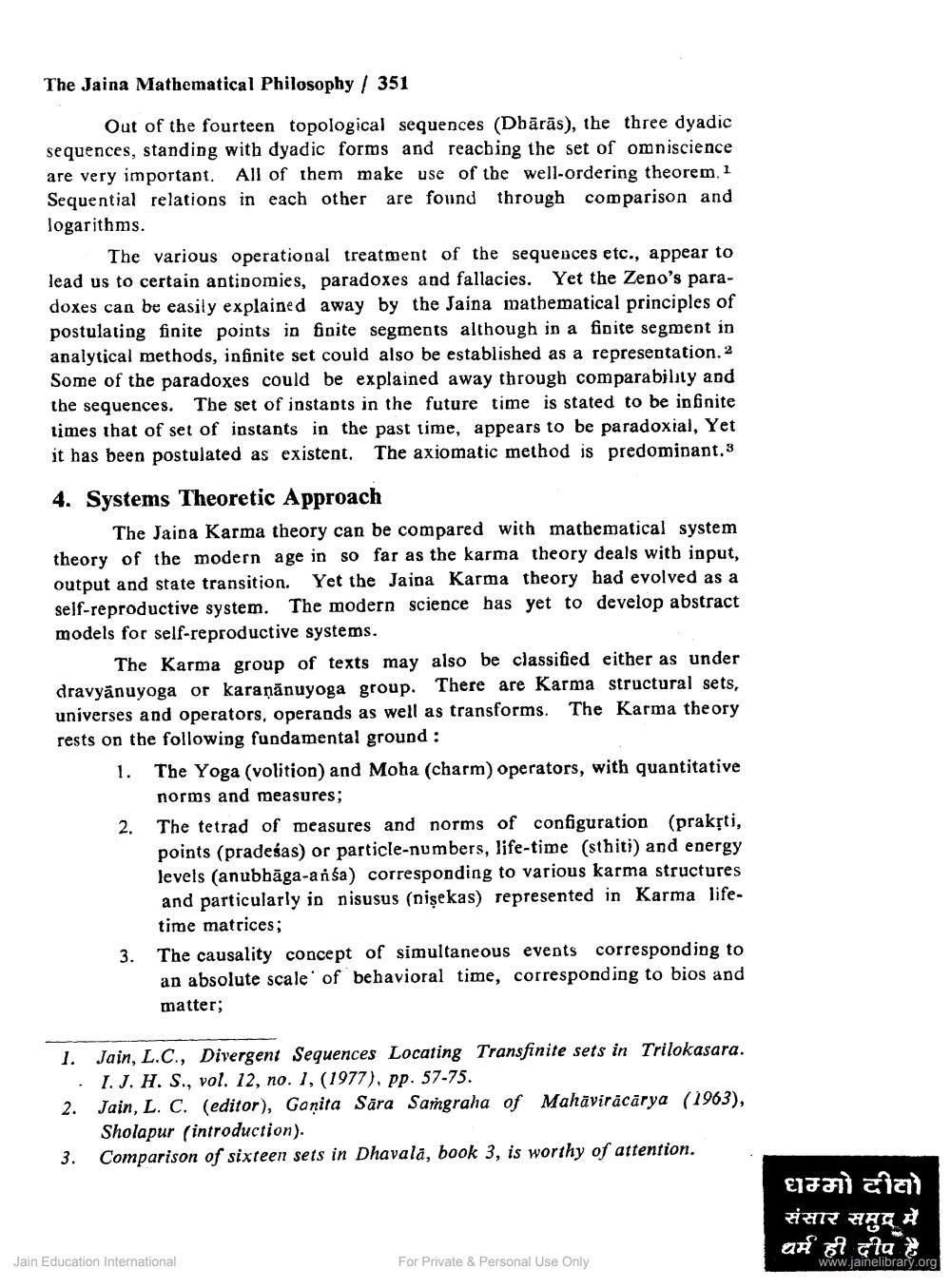________________
The Jaina Mathematical Philosophy / 351
Out of the fourteen topological sequences (Dbārās), the three dyadic sequences, standing with dyadic forms and reaching the set of omniscience are very important. All of them make use of the well-ordering theorem. 1 Sequential relations in each other are found through comparison and logarithms.
The various operational treatment of the sequences etc., appear to lead us to certain antinomies, paradoxes and fallacies. Yet the Zeno's paradoxes can be easily explained away by the Jaina mathematical principles of postulating finite points in finite segments although in a finite segment in analytical methods, infinite set could also be established as a representation.2 Some of the paradoxes could be explained away through comparability and the sequences. The set of instants in the future time is stated to be infinite times that of set of instants in the past time, appears to be paradoxial, Yet it has been postulated as existent. The axiomatic method is predominant.3
4. Systems Theoretic Approach
The Jaina Karma theory can be compared with mathematical system theory of the modern age in so far as the karma theory deals with input, output and state transition. Yet the Jaina Karma theory had evolved as a self-reproductive system. The modern science has yet to develop abstract models for self-reproductive systems.
The Karma group of texts may also be classified either as under dravyānuyoga or karanānuyoga group. There are Karma structural sets, universes and operators, operands as well as transforms. The Karma theory rests on the following fundamental ground:
1. The Yoga (volition) and Moha (charm) operators, with quantitative
norms and measures; 2. The tetrad of measures and norms of configuration (praksti,
points (pradeśas) or particle-numbers, life-time (sthiti) and energy levels (anubhāga-ansa) corresponding to various karma structures and particularly in nisusus (nişekas) represented in Karma lifetime matrices; The causality concept of simultaneous events corresponding to an absolute scale of behavioral time, corresponding to bios and matter;
3.
1. Jain, L.C., Divergent Sequences Locating Transfinite sets in Trilokasara.
· I. J. H. S., vol. 12, no. 1, (1977), pp. 57-75. 2. Jain, L. C. (editor), Ganita Sara Sangraha of Mahāvirācārya (1963),
Sholapur (introduction). 3. Comparison of sixteen sets in Dhavala, book 3, is worthy of attention.
EJHHdia संसार समुद्र में ar si atu
www.jainelibrary.org
Jain Education International
For Private & Personal Use Only




